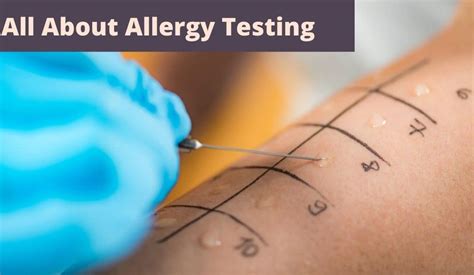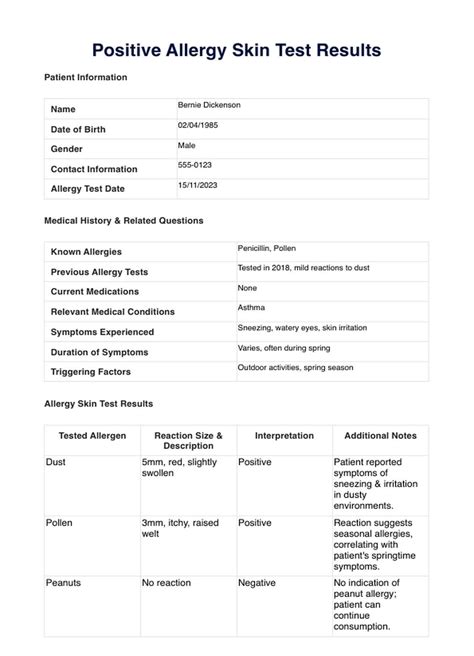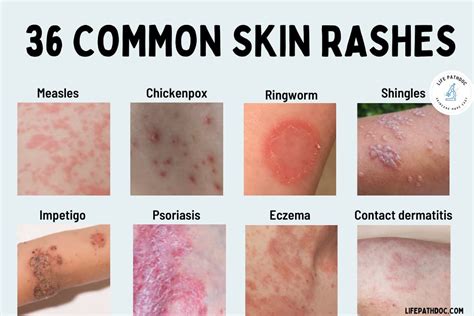Intro
Discover the ultimate Skin Allergy Test Guide, featuring patch testing, prick tests, and blood tests to diagnose eczema, dermatitis, and hives, with expert tips on allergy symptoms, treatment, and prevention for sensitive skin conditions.
Skin allergies are a common issue affecting millions of people worldwide, causing discomfort, itchiness, and in severe cases, life-threatening reactions. Understanding the causes, symptoms, and diagnosis of skin allergies is crucial for effective management and treatment. In this article, we will delve into the world of skin allergy tests, exploring their importance, types, and procedures to help you navigate the complex world of skin allergies.
Skin allergies can be triggered by a wide range of substances, including foods, medications, environmental factors, and even certain materials. The immune system overreacts to these harmless substances, releasing chemicals that cause inflammation, redness, and itching. If left untreated, skin allergies can lead to more severe conditions, such as eczema, hives, or anaphylaxis. Therefore, it is essential to identify the underlying causes of skin allergies to develop an effective treatment plan.
The diagnosis of skin allergies typically involves a combination of medical history, physical examination, and skin allergy tests. These tests help healthcare professionals to identify the specific allergens responsible for the allergic reaction, allowing for targeted treatment and prevention strategies. With the increasing prevalence of skin allergies, it is essential to understand the different types of skin allergy tests, their procedures, and interpretation of results.
Introduction to Skin Allergy Tests

Types of Skin Allergy Tests
Skin prick tests, also known as prick tests or puncture tests, are the most common type of skin allergy test. This test involves placing a small amount of the suspected allergen on the skin, usually on the forearm or back, and pricking the skin with a small lancet. The skin is then observed for signs of an allergic reaction, such as redness, swelling, or itching. The results are usually available within 15-20 minutes, making it a quick and convenient test.How Skin Allergy Tests Work

Preparation for Skin Allergy Tests
Before undergoing a skin allergy test, it is essential to prepare properly to ensure accurate results. Patients are usually advised to avoid taking antihistamines, steroids, and other medications that may suppress the allergic reaction. Additionally, patients should inform their healthcare professional about any medical conditions, such as eczema or psoriasis, that may affect the test results.Interpreting Skin Allergy Test Results

Common Skin Allergens
Some common skin allergens include: * Nickel * Latex * Fragrances * Dyes * Certain medications, such as antibiotics or anticonvulsants * Foods, such as peanuts or shellfish * Insect bites or stings * Pollen or other environmental allergensTreatment and Management of Skin Allergies

Prevention of Skin Allergies
Prevention is key to managing skin allergies. Avoiding known allergens, wearing protective clothing, and using hypoallergenic products can help reduce the risk of an allergic reaction. Additionally, maintaining good skin care habits, such as moisturizing and avoiding harsh soaps, can help to reduce the risk of skin irritation and allergic reactions.Conclusion and Next Steps

What is the most common type of skin allergy test?
+The most common type of skin allergy test is the skin prick test, also known as the prick test or puncture test.
How long does it take to get the results of a skin allergy test?
+The results of a skin allergy test are usually available within 15-20 minutes.
Can skin allergy tests be done on children?
+Yes, skin allergy tests can be done on children, but the procedure and interpretation of results may vary depending on the child's age and medical history.
